-
EXECUTIVE SUMMARY
-
OVERVIEW
-
MARKET INTRODUCTION
-
DEFINITION
-
SCOPE OF THE STUDY
-
RESEARCH OBJECTIVE
-
LIST OF ASSUMPTIONS
-
RESEARCH METHODOLOGY
-
OVERVIEW
-
DATA MINING
-
SECONDARY RESEARCH
-
PRIMARY RESEARCH
- PRIMARY INTERVIEWS AND INFORMATION GATHERING PROCESS
- BREAKDOWN OF PRIMARY RESPONDENTS
-
FORECASTING TECHNIQUES
-
RESEARCH METHODOLOGY FOR MARKET SIZE ESTIMATION
- BOTTOM-UP APPROACH
- TOP-DOWN APPROACH
-
DATA TRIANGULATION
-
VALIDATION
-
MARKET DYNAMICS
-
OVERVIEW
-
DRIVERS
- HIGH PREVALENCE OF DENTAL DISEASES
- INCREASING TREND TOWARDS DENTAL HEALTH CHECK-UP
- GROWING GERIATRIC POPULATION WORLDWIDE
-
RESTRAINTS
- DEARTH OF SKILLED ANESTHESIOLOGISTS
-
OPPORTUNITIES
- INTRODUCTION OF NEW DENTAL PRODUCTS
-
MARKET FACTOR ANALYSIS
-
SUPPLY CHAIN ANALYSIS
- R&D AND DESIGNING
- MANUFACTURING
- DISTRIBUTION, MARKETING & SALES
- POST-SALES MONITORING
-
PORTER''S FIVE FORCES MODEL
- THREAT OF NEW ENTRANTS
- BARGAINING POWER OF SUPPLIERS
- THREAT OF SUBSTITUTES
- BARGAINING POWER OF BUYERS
- RIVALRY
-
IMPACT ANALYSIS OF COVID-19 ON DENTAL ANESTHESIA MARKET
- OVERVIEW
- IMPACT ON GROWTH OF THE MARKET
- IMPACT ON TRADE OF MAJOR MANUFACTURES
- IMPACT IN MAJOR REGIONS
- IMPACT ON THE MANUFACTURING PROCESS
-
GLOBAL DENTAL ANESTHESIA MARKET, BY PRODUCT TYPE
-
OVERVIEW
-
LIDOCAINE
-
MEPIVACAINE
-
PRILOCAINE
-
BUPIVACAINE 0.5% WITH EPINEPHRINE1:200,000
-
ARTICAINE
-
OTHERS
-
GLOBAL DENTAL ANESTHESIA MARKET, BY MODE OF ADMINISTRATION
-
OVERVIEW
-
MAXILLARY
-
MANDIBULAR
-
OTHERS
-
GLOBAL DENTAL ANESTHESIA MARKET, BY TECHNIQUE
-
OVERVIEW
-
LOCAL INFILTRATION
-
FIELD BLOCK
-
NERVE BLOCK
-
GLOBAL DENTAL ANESTHESIA MARKET, BY DURATION OF ACTION
-
OVERVIEW
-
SHORT
-
MEDIUM
-
LONG
-
GLOBAL DENTAL ANESTHESIA MARKET, BY END USER
-
OVERVIEW
-
HOSPITAL CLINICS
-
CLINICS
-
OTHER
-
GLOBAL DENTAL ANESTHESIA MARKET, BY DISTRIBUTION CHANNEL
-
OVERVIEW
-
PHARMACIES AND DRUG STORES
-
E-COMMERCE
-
OTHER
-
GLOBAL DENTAL ANESTHESIA MARKET, BY REGION
-
OVERVIEW
-
AMERICAS
- NORTH AMERICA
- SOUTH AMERICA
-
EUROPE
- WESTERN EUROPE
-
ASIA-PACIFIC
- CHINA
- JAPAN
- INDIA
- AUSTRALIA
- SOUTH KOREA
- REST OF ASIA-PACIFIC
-
MIDDLE EAST & AFRICA
- MIDDLE EAST
- AFRICA
-
COMPETITIVE LANDSCAPE
-
OVERVIEW
-
COMPETITIVE BENCHMARKING
-
MAJOR GROWTH STRATEGY IN DENTAL ANESTHESIA MARKET
-
THE LEADING PLAYER IN TERMS OF NUMBER OF DEVELOPMENTS IN DENTAL ANESTHESIA MARKET
-
KEY DEVELOPMENT ANALYSIS
-
KEY DEVELOPMENTS & GROWTH STRATEGIES
- PRODUCT APPROVALS AND PRODUCT LAUNCHES
- EXPANSIONS/AGREEMENT
- MERGERS & ACQUISITIONS
-
MAJOR PLAYERS SALES ANALYSIS
-
MAJOR PLAYERS R&D ANALYSIS
-
COMPANY PROFILES
-
DENTSPLY SIRONA
- COMPANY OVERVIEW
- FINANCIAL OVERVIEW
- PRODUCTS OFFERED
- KEY DEVELOPMENTS
- SWOT ANALYSIS
- KEY STRATEGIES
-
SEPTODONT, INC.
- COMPANY OVERVIEW
- FINANCIAL OVERVIEW
- PRODUCTS OFFERED
- KEY DEVELOPMENTS
- SWOT ANALYSIS
- KEY STRATEGIES
-
ASTRAZENECA
- COMPANY OVERVIEW
- FINANCIAL OVERVIEW
- PRODUCTS OFFERED
- KEY DEVELOPMENTS
- SWOT ANALYSIS
- KEY STRATEGIES
-
PRIMEX PHARMACEUTICALS
- COMPANY OVERVIEW
- FINANCIAL OVERVIEW
- PRODUCTS OFFERED
- KEY DEVELOPMENTS
- KEY STRATEGIES
-
3M
- COMPANY OVERVIEW
- FINANCIAL OVERVIEW
- PRODUCTS OFFERED
- KEY DEVELOPMENTS
- SWOT ANALYSIS
- KEY STRATEGIES
-
CENTRIX, INC.
- COMPANY OVERVIEW
- FINANCIAL OVERVIEW
- PRODUCTS OFFERED
- KEY DEVELOPMENTS
- KEY STRATEGIES
-
CETYLITE, INC.
- COMPANY OVERVIEW
- FINANCIAL OVERVIEW
- PRODUCTS/SERVICES OFFERED
- KEY DEVELOPMENTS
- KEY STRATEGIES
-
CROSSTEX INTERNATIONAL, INC.
- COMPANY OVERVIEW
- FINANCIAL OVERVIEW
- PRODUCTS OFFERED
- KEY DEVELOPMENTS
- SWOT ANALYSIS
- KEY STRATEGIES
-
DMG AMERICA
- COMPANY OVERVIEW
- FINANCIAL OVERVIEW
- PRODUCTS OFFERED
- KEY DEVELOPMENTS
- KEY STRATEGIES
-
HENRY SCHEIN, INC.
- COMPANY OVERVIEW
- FINANCIAL OVERVIEW
- PRODUCTS OFFERED
- KEY DEVELOPMENTS
- SWOT ANALYSIS
- KEY STRATEGIES
-
PATTERSON COMPANIES, INC. (PATTERSON DENTAL)
- COMPANY OVERVIEW
- FINANCIAL OVERVIEW
- PRODUCTS OFFERED
- KEY DEVELOPMENTS
- KEY STRATEGIES
-
PIERREL SPA
- COMPANY OVERVIEW
- FINANCIAL OVERVIEW
- PRODUCTS OFFERED
- KEY DEVELOPMENTS
- KEY STRATEGIES
-
APPENDIX
-
REFERENCES
-
RELATED REPORTS
-
-
LIST OF TABLES
-
LIST OF ASSUMPTIONS & LIMITATIONS
-
GLOBAL: DENTAL ANESTHESIA MARKET, BY PRODUCT TYPE, 2018-2027 (USD MILLION)
-
GLOBAL: DENTAL ANESTHESIA MARKET, FOR LIDOCAINE, BY TYPE, 2018–2027 (USD MILLION)
-
GLOBAL: DENTAL ANESTHESIA MARKET, FOR LIDOCAINE 2% WITH EPINEPHRINE 1:100,000, BY REGION, 2018–2027 (USD MILLION)
-
GLOBAL: DENTAL ANESTHESIA MARKET, FOR LIDOCAINE 2% WITH EPINEPHRINE 1:50,000, BY REGION, 2018–2027 (USD MILLION)
-
GLOBAL: DENTAL ANESTHESIA MARKET, FOR LIDOCAINE PLAIN, BY REGION, 2018–2027 (USD MILLION)
-
GLOBAL: DENTAL ANESTHESIA MARKET, FOR MEPIVACAINE, BY TYPE, 2018–2027 (USD MILLION)
-
GLOBAL: DENTAL ANESTHESIA MARKET, FOR MEPIVACAINE 2% WITH LEVONORDEFRIN 1:20,000, BY REGION, 2018–2027 (USD MILLION)
-
GLOBAL: DENTAL ANESTHESIA MARKET, FOR MEPIVACAINE 3%, BY REGION, 2018–2027 (USD MILLION)
-
GLOBAL: DENTAL ANESTHESIA MARKET, FOR PRILOCAINE, BY TYPE, 2018–2027 (USD MILLION)
-
GLOBAL: DENTAL ANESTHESIA MARKET, FOR PRILOCAINE 4% WITH EPINEPHRINE 1:200,000, BY REGION, 2018–2027 (USD MILLION)
-
GLOBAL: DENTAL ANESTHESIA MARKET, FOR PRILOCAINE 4%, BY REGION, 2018–2027 (USD MILLION)
-
GLOBAL: DENTAL ANESTHESIA MARKET, FOR BUPIVACAINE 0.5% WITH EPINEPHRINE1:200,000, 2018–2027 (USD MILLION)
-
GLOBAL: DENTAL ANESTHESIA MARKET, FOR ARTICAINE, BY TYPE, 2018–2027 (USD MILLION)
-
GLOBAL: DENTAL ANESTHESIA MARKET, FOR ARTICAINE 4% WITH EPINEPHRINE 1:100,00, BY REGION, 2018–2027 (USD MILLION)
-
GLOBAL: DENTAL ANESTHESIA MARKET, FOR ARTICAINE 4% WITH EPINEPHRINE 1:200,000, BY REGION, 2018–2027 (USD MILLION)
-
GLOBAL: DENTAL ANESTHESIA MARKET, FOR OTHERS, 2018–2027 (USD MILLION)
-
GLOBAL: DENTAL ANESTHESIA MARKET, BY MODE OF ADMINISTRATION, 2018–2027 (USD MILLION)
-
GLOBAL: DENTAL ANESTHESIA MARKET, FOR MAXILLARY, BY TYPE, 2018–2027 (USD MILLION)
-
GLOBAL: DENTAL ANESTHESIA MARKET, FOR SUPRAPERIOSTEAL INJECTION, BY REGION, 2018–2027 (USD MILLION)
-
GLOBAL: DENTAL ANESTHESIA MARKET, FOR INTRASEPTAL INJECTION, BY REGION, 2018–2027 (USD MILLION)
-
GLOBAL: DENTAL ANESTHESIA MARKET, FOR PERIODONTAL LIGAMENT INJECTION, BY REGION, 2018–2027 (USD MILLION)
-
GLOBAL: DENTAL ANESTHESIA MARKET, FOR PERIAPICAL INJECTION, BY REGION, 2018–2027 (USD MILLION)
-
GLOBAL: DENTAL ANESTHESIA MARKET, FOR MANDIBULAR, BY TYPE, 2018–2027 (USD MILLION)
-
GLOBAL: DENTAL ANESTHESIA MARKET, FOR IAN, BY REGION, 2018–2027 (USD MILLION)
-
GLOBAL: DENTAL ANESTHESIA MARKET, FOR AKINOSI, BY REGION, 2018–2027 (USD MILLION)
-
GLOBAL: DENTAL ANESTHESIA MARKET, FOR GOW-GATES, BY REGION, 2018–2027 (USD MILLION)
-
GLOBAL: DENTAL ANESTHESIA MARKET, FOR TISSUE OR SKIN, BY REGION, 2018–2027 (USD MILLION)
-
GLOBAL: DENTAL ANESTHESIA MARKET, FOR OTHERS, 2018–2027 (USD MILLION)
-
GLOBAL: DENTAL ANESTHESIA MARKET, BY TECHNIQUE, 2018–2027 (USD MILLION)
-
GLOBAL: DENTAL ANESTHESIA MARKET, FOR LOCAL INFILTRATION, BY REGION, 2018–2027 (USD MILLION)
-
GLOBAL: DENTAL ANESTHESIA MARKET, FOR FIELD BLOCK, BY REGION, 2018–2027 (USD MILLION)
-
GLOBAL: DENTAL ANESTHESIA MARKET, FOR NERVE BLOCK, BY REGION, 2018–2027 (USD MILLION)
-
GLOBAL: DENTAL ANESTHESIA MARKET, FOR NERVE BLOCK, BY TYPE, 2018–2027 (USD MILLION)
-
GLOBAL: DENTAL ANESTHESIA MARKET, FOR POSTERIOR SUPERIOR ALVEOLAR, BY REGION, 2018–2027 (USD MILLION)
-
GLOBAL: DENTAL ANESTHESIA MARKET, FOR MIDDLE SUPERIOR ALVEOLAR, BY REGION, 2018–2027 (USD MILLION)
-
GLOBAL: DENTAL ANESTHESIA MARKET, FOR ANTERIOR SUPERIOR ALVEOLAR, BY REGION, 2018–2027 (USD MILLION)
-
GLOBAL: DENTAL ANESTHESIA MARKET, BY DURATION OF ACTION, 2018–2027 (USD MILLION)
-
GLOBAL: DENTAL ANESTHESIA MARKET, FOR SHORT, BY REGION, 2018–2027 (USD MILLION)
-
GLOBAL: DENTAL ANESTHESIA MARKET, FOR MEDIUM, BY REGION, 2018–2027 (USD MILLION)
-
GLOBAL: DENTAL ANESTHESIA MARKET, FOR LONG, BY REGION, 2018–2027 (USD MILLION)
-
GLOBAL: DENTAL ANESTHESIA MARKET, BY END USER, 2018–2027 (USD MILLION)
-
GLOBAL: DENTAL ANESTHESIA MARKET, FOR HOSPITAL CLINICS, BY REGION, 2018–2027 (USD MILLION)
-
GLOBAL: DENTAL ANESTHESIA MARKET, FOR CLINICS, BY REGION, 2018–2027 (USD MILLION)
-
GLOBAL: DENTAL ANESTHESIA MARKET, FOR OTHER, BY REGION, 2018–2027 (USD MILLION)
-
GLOBAL: DENTAL ANESTHESIA MARKET, BY DISTRIBUTION CHANNEL, 2018–2027 (USD MILLION)
-
GLOBAL: DENTAL ANESTHESIA MARKET, FOR PHARMACIES AND DRUG STORES, BY REGION, 2018–2027 (USD MILLION)
-
GLOBAL: DENTAL ANESTHESIA MARKET, FOR E-COMMERCE, BY REGION, 2018–2027 (USD MILLION)
-
GLOBAL: DENTAL ANESTHESIA MARKET, FOR OTHER, BY REGION, 2018–2027 (USD MILLION)
-
GLOBAL: DENTAL ANESTHESIA MARKET, BY REGION, 2018–2027 (USD MILLION)
-
AMERICAS: DENTAL ANESTHESIA MARKET, BY REGION, 2018–2027 (USD MILLION)
-
AMERICAS: DENTAL ANESTHESIA MARKET, BY PRODUCT TYPE, 2018–2027 (USD MILLION)
-
AMERICAS: DENTAL ANESTHESIA MARKET FOR LIDOCAINE, BY TYPE, 2018–2027 (USD MILLION)
-
AMERICAS: DENTAL ANESTHESIA MARKET FOR MEPIVACAINE, BY TYPE, 2018–2027 (USD MILLION)
-
AMERICAS: DENTAL ANESTHESIA MARKET FOR PRILOCAINE, BY TYPE, 2018–2027 (USD MILLION)
-
AMERICAS: DENTAL ANESTHESIA MARKET ARTICAINE, BY TYPE, 2018–2027 (USD MILLION)
-
AMERICAS: DENTAL ANESTHESIA MARKET, BY MODE OF ADMINISTRATION, 2018–2027 (USD MILLION)
-
AMERICAS: DENTAL ANESTHESIA MARKET MAXILLARY, BY TYPE, 2018–2027 (USD MILLION)
-
AMERICAS: DENTAL ANESTHESIA MARKET MANDIBULAR, BY TYPE, 2018–2027 (USD MILLION)
-
AMERICAS: DENTAL ANESTHESIA MARKET, BY TECHNIQUE, 2018–2027 (USD MILLION)
-
AMERICAS: DENTAL ANESTHESIA MARKET NERVE BLOCK, BY TYPE, 2018–2027 (USD MILLION)
-
AMERICAS: DENTAL ANESTHESIA MARKET, BY DURATION OF ACTION, 2018–2027 (USD MILLION)
-
AMERICAS: DENTAL ANESTHESIA MARKET, BY END USER, 2018–2027 (USD MILLION)
-
AMERICAS: DENTAL ANESTHESIA MARKET, BY DISTRIBUTION CHANNEL, 2018–2027 (USD MILLION)
-
NORTH AMERICA: DENTAL ANESTHESIA MARKET, BY REGION, 2018–2027 (USD MILLION)
-
NORTH AMERICA: DENTAL ANESTHESIA MARKET, BY PRODUCT TYPE, 2018–2027 (USD MILLION)
-
NORTH AMERICA: DENTAL ANESTHESIA MARKET FOR LIDOCAINE, BY TYPE, 2018–2027 (USD MILLION)
-
NORTH AMERICA: DENTAL ANESTHESIA MARKET FOR MEPIVACAINE, BY TYPE, 2018–2027 (USD MILLION)
-
NORTH AMERICA: DENTAL ANESTHESIA MARKET FOR PRILOCAINE, BY TYPE, 2018–2027 (USD MILLION)
-
NORTH AMERICA: DENTAL ANESTHESIA MARKET ARTICAINE, BY TYPE, 2018–2027 (USD MILLION)
-
NORTH AMERICA: DENTAL ANESTHESIA MARKET, BY MODE OF ADMINISTRATION, 2018–2027 (USD MILLION)
-
NORTH AMERICA: DENTAL ANESTHESIA MARKET MAXILLARY, BY TYPE, 2018–2027 (USD MILLION)
-
NORTH AMERICA: DENTAL ANESTHESIA MARKET MANDIBULAR, BY TYPE, 2018–2027 (USD MILLION)
-
NORTH AMERICA: DENTAL ANESTHESIA MARKET, BY TECHNIQUE, 2018–2027 (USD MILLION)
-
NORTH AMERICA: DENTAL ANESTHESIA MARKET NERVE BLOCK, BY TYPE, 2018–2027 (USD MILLION)
-
NORTH AMERICA: DENTAL ANESTHESIA MARKET, BY DURATION OF ACTION, 2018–2027 (USD MILLION)
-
NORTH AMERICA: DENTAL ANESTHESIA MARKET, BY END USER, 2018–2027 (USD MILLION)
-
NORTH AMERICA: DENTAL ANESTHESIA MARKET, BY DISTRIBUTION CHANNEL, 2018–2027 (USD MILLION)
-
US: DENTAL ANESTHESIA MARKET, BY PRODUCT TYPE, 2018–2027 (USD MILLION)
-
US: DENTAL ANESTHESIA MARKET FOR LIDOCAINE, BY TYPE, 2018–2027 (USD MILLION)
-
US: DENTAL ANESTHESIA MARKET FOR MEPIVACAINE, BY TYPE, 2018–2027 (USD MILLION)
-
US: DENTAL ANESTHESIA MARKET FOR PRILOCAINE, BY TYPE, 2018–2027 (USD MILLION)
-
US: DENTAL ANESTHESIA MARKET ARTICAINE, BY TYPE, 2018–2027 (USD MILLION)
-
US: DENTAL ANESTHESIA MARKET, BY MODE OF ADMINISTRATION, 2018–2027 (USD MILLION)
-
US: DENTAL ANESTHESIA MARKET MAXILLARY, BY TYPE, 2018–2027 (USD MILLION)
-
US: DENTAL ANESTHESIA MARKET MANDIBULAR, BY TYPE, 2018–2027 (USD MILLION)
-
US: DENTAL ANESTHESIA MARKET, BY TECHNIQUE, 2018–2027 (USD MILLION)
-
US: DENTAL ANESTHESIA MARKET NERVE BLOCK, BY TYPE, 2018–2027 (USD MILLION)
-
US: DENTAL ANESTHESIA MARKET, BY DURATION OF ACTION, 2018–2027 (USD MILLION)
-
US: DENTAL ANESTHESIA MARKET, BY END USER, 2018–2027 (USD MILLION)
-
US: DENTAL ANESTHESIA MARKET, BY DISTRIBUTION CHANNEL, 2018–2027 (USD MILLION)
-
CANADA: DENTAL ANESTHESIA MARKET, BY PRODUCT TYPE, 2018–2027 (USD MILLION)
-
CANADA: DENTAL ANESTHESIA MARKET FOR LIDOCAINE, BY TYPE, 2018–2027 (USD MILLION)
-
CANADA: DENTAL ANESTHESIA MARKET FOR MEPIVACAINE, BY TYPE, 2018–2027 (USD MILLION)
-
CANADA: DENTAL ANESTHESIA MARKET FOR PRILOCAINE, BY TYPE, 2018–2027 (USD MILLION)
-
CANADA: DENTAL ANESTHESIA MARKET ARTICAINE, BY TYPE, 2018–2027 (USD MILLION)
-
CANADA: DENTAL ANESTHESIA MARKET, BY MODE OF ADMINISTRATION, 2018–2027 (USD MILLION)
-
CANADA: DENTAL ANESTHESIA MARKET MAXILLARY, BY TYPE, 2018–2027 (USD MILLION)
-
CANADA: DENTAL ANESTHESIA MARKET MANDIBULAR, BY TYPE, 2018–2027 (USD MILLION)
-
CANADA: DENTAL ANESTHESIA MARKET, BY TECHNIQUE, 2018–2027 (USD MILLION)
-
CANADA: DENTAL ANESTHESIA MARKET NERVE BLOCK, BY TYPE, 2018–2027 (USD MILLION)
-
CANADA: DENTAL ANESTHESIA MARKET, BY DURATION OF ACTION, 2018–2027 (USD MILLION)
-
CANADA: DENTAL ANESTHESIA MARKET, BY END USER, 2018–2027 (USD MILLION)
-
CANADA: DENTAL ANESTHESIA MARKET, BY DISTRIBUTION CHANNEL, 2018–2027 (USD MILLION)
-
SOUTH AMERICA: DENTAL ANESTHESIA MARKET, BY PRODUCT TYPE, 2018–2027 (USD MILLION)
-
SOUTH AMERICA: DENTAL ANESTHESIA MARKET FOR LIDOCAINE, BY TYPE, 2018–2027 (USD MILLION)
-
SOUTH AMERICA: DENTAL ANESTHESIA MARKET FOR MEPIVACAINE, BY TYPE, 2018–2027 (USD MILLION)
-
SOUTH AMERICA: DENTAL ANESTHESIA MARKET FOR PRILOCAINE, BY TYPE, 2018–2027 (USD MILLION)
-
SOUTH AMERICA: DENTAL ANESTHESIA MARKET ARTICAINE, BY TYPE, 2018–2027 (USD MILLION)
-
SOUTH AMERICA: DENTAL ANESTHESIA MARKET, BY MODE OF ADMINISTRATION, 2018–2027 (USD MILLION)
-
SOUTH AMERICA: DENTAL ANESTHESIA MARKET MAXILLARY, BY TYPE, 2018–2027 (USD MILLION)
-
SOUTH AMERICA: DENTAL ANESTHESIA MARKET MANDIBULAR, BY TYPE, 2018–2027 (USD MILLION)
-
SOUTH AMERICA: DENTAL ANESTHESIA MARKET, BY TECHNIQUE, 2018–2027 (USD MILLION)
-
SOUTH AMERICA: DENTAL ANESTHESIA MARKET NERVE BLOCK, BY TYPE, 2018–2027 (USD MILLION)
-
SOUTH AMERICA: DENTAL ANESTHESIA MARKET, BY DURATION OF ACTION, 2018–2027 (USD MILLION)
-
SOUTH AMERICA: DENTAL ANESTHESIA MARKET, BY END USER, 2018–2027 (USD MILLION)
-
SOUTH AMERICA: DENTAL ANESTHESIA MARKET, BY DISTRIBUTION CHANNEL, 2018–2027 (USD MILLION)
-
EUROPE: DENTAL ANESTHESIA MARKET, BY REGION, 2018–2027 (USD MILLION)
-
EUROPE: DENTAL ANESTHESIA MARKET, BY PRODUCT TYPE, 2018–2027 (USD MILLION)
-
EUROPE: DENTAL ANESTHESIA MARKET FOR LIDOCAINE, BY TYPE, 2018–2027 (USD MILLION)
-
EUROPE: DENTAL ANESTHESIA MARKET FOR MEPIVACAINE, BY TYPE, 2018–2027 (USD MILLION)
-
EUROPE: DENTAL ANESTHESIA MARKET FOR PRILOCAINE, BY TYPE, 2018–2027 (USD MILLION)
-
EUROPE: DENTAL ANESTHESIA MARKET ARTICAINE, BY TYPE, 2018–2027 (USD MILLION)
-
EUROPE: DENTAL ANESTHESIA MARKET, BY MODE OF ADMINISTRATION, 2018–2027 (USD MILLION)
-
EUROPE: DENTAL ANESTHESIA MARKET MAXILLARY, BY TYPE, 2018–2027 (USD MILLION)
-
EUROPE: DENTAL ANESTHESIA MARKET MANDIBULAR, BY TYPE, 2018–2027 (USD MILLION)
-
EUROPE: DENTAL ANESTHESIA MARKET, BY TECHNIQUE, 2018–2027 (USD MILLION)
-
EUROPE: DENTAL ANESTHESIA MARKET NERVE BLOCK, BY TYPE, 2018–2027 (USD MILLION)
-
EUROPE: DENTAL ANESTHESIA MARKET, BY DURATION OF ACTION, 2018–2027 (USD MILLION)
-
EUROPE: DENTAL ANESTHESIA MARKET, BY END USER, 2018–2027 (USD MILLION)
-
EUROPE: DENTAL ANESTHESIA MARKET, BY DISTRIBUTION CHANNEL, 2018–2027 (USD MILLION)
-
WESTERN EUROPE: DENTAL ANESTHESIA MARKET, BY COUNTRY, 2018–2027 (USD MILLION)
-
WESTERN EUROPE: DENTAL ANESTHESIA MARKET, BY PRODUCT TYPE, 2018–2027 (USD MILLION)
-
WESTERN EUROPE: DENTAL ANESTHESIA MARKET FOR LIDOCAINE, BY TYPE, 2018–2027 (USD MILLION)
-
WESTERN EUROPE: DENTAL ANESTHESIA MARKET FOR MEPIVACAINE, BY TYPE, 2018–2027 (USD MILLION)
-
WESTERN EUROPE: DENTAL ANESTHESIA MARKET FOR PRILOCAINE, BY TYPE, 2018–2027 (USD MILLION)
-
WESTERN EUROPE: DENTAL ANESTHESIA MARKET ARTICAINE, BY TYPE, 2018–2027 (USD MILLION)
-
WESTERN EUROPE: DENTAL ANESTHESIA MARKET, BY MODE OF ADMINISTRATION, 2018–2027 (USD MILLION)
-
WESTERN EUROPE: DENTAL ANESTHESIA MARKET MAXILLARY, BY TYPE, 2018–2027 (USD MILLION)
-
WESTERN EUROPE: DENTAL ANESTHESIA MARKET MANDIBULAR, BY TYPE, 2018–2027 (USD MILLION)
-
WESTERN EUROPE: DENTAL ANESTHESIA MARKET, BY TECHNIQUE, 2018–2027 (USD MILLION)
-
WESTERN EUROPE: DENTAL ANESTHESIA MARKET NERVE BLOCK, BY TYPE, 2018–2027 (USD MILLION)
-
WESTERN EUROPE: DENTAL ANESTHESIA MARKET, BY DURATION OF ACTION, 2018–2027 (USD MILLION)
-
WESTERN EUROPE: DENTAL ANESTHESIA MARKET, BY END USER, 2018–2027 (USD MILLION)
-
WESTERN EUROPE: DENTAL ANESTHESIA MARKET, BY DISTRIBUTION CHANNEL, 2018–2027 (USD MILLION)
-
GERMANY: DENTAL ANESTHESIA MARKET, BY PRODUCT TYPE, 2018–2027 (USD MILLION)
-
GERMANY: DENTAL ANESTHESIA MARKET FOR LIDOCAINE, BY TYPE, 2018–2027 (USD MILLION)
-
GERMANY: DENTAL ANESTHESIA MARKET FOR MEPIVACAINE, BY TYPE, 2018–2027 (USD MILLION)
-
GERMANY: DENTAL ANESTHESIA MARKET FOR PRILOCAINE, BY TYPE, 2018–2027 (USD MILLION)
-
GERMANY: DENTAL ANESTHESIA MARKET ARTICAINE, BY TYPE, 2018–2027 (USD MILLION)
-
GERMANY: DENTAL ANESTHESIA MARKET, BY MODE OF ADMINISTRATION, 2018–2027 (USD MILLION)
-
GERMANY: DENTAL ANESTHESIA MARKET MAXILLARY, BY TYPE, 2018–2027 (USD MILLION)
-
GERMANY: DENTAL ANESTHESIA MARKET MANDIBULAR, BY TYPE, 2018–2027 (USD MILLION)
-
GERMANY: DENTAL ANESTHESIA MARKET, BY TECHNIQUE, 2018–2027 (USD MILLION)
-
GERMANY: DENTAL ANESTHESIA MARKET NERVE BLOCK, BY TYPE, 2018–2027 (USD MILLION)
-
GERMANY: DENTAL ANESTHESIA MARKET, BY DURATION OF ACTION, 2018–2027 (USD MILLION)
-
GERMANY: DENTAL ANESTHESIA MARKET, BY END USER, 2018–2027 (USD MILLION)
-
GERMANY: DENTAL ANESTHESIA MARKET, BY DISTRIBUTION CHANNEL, 2018–2027 (USD MILLION)
-
FRANCE: DENTAL ANESTHESIA MARKET, BY PRODUCT TYPE, 2018–2027 (USD MILLION)
-
FRANCE: DENTAL ANESTHESIA MARKET FOR LIDOCAINE, BY TYPE, 2018–2027 (USD MILLION)
-
FRANCE: DENTAL ANESTHESIA MARKET FOR MEPIVACAINE, BY TYPE, 2018–2027 (USD MILLION)
-
FRANCE: DENTAL ANESTHESIA MARKET FOR PRILOCAINE, BY TYPE, 2018–2027 (USD MILLION)
-
FRANCE: DENTAL ANESTHESIA MARKET ARTICAINE, BY TYPE, 2018–2027 (USD MILLION)
-
FRANCE: DENTAL ANESTHESIA MARKET, BY MODE OF ADMINISTRATION, 2018–2027 (USD MILLION)
-
FRANCE: DENTAL ANESTHESIA MARKET MAXILLARY, BY TYPE, 2018–2027 (USD MILLION)
-
FRANCE: DENTAL ANESTHESIA MARKET MANDIBULAR, BY TYPE, 2018–2027 (USD MILLION)
-
FRANCE: DENTAL ANESTHESIA MARKET, BY TECHNIQUE, 2018–2027 (USD MILLION)
-
FRANCE: DENTAL ANESTHESIA MARKET NERVE BLOCK, BY TYPE, 2018–2027 (USD MILLION)
-
FRANCE: DENTAL ANESTHESIA MARKET, BY DURATION OF ACTION, 2018–2027 (USD MILLION)
-
FRANCE: DENTAL ANESTHESIA MARKET, BY END USER, 2018–2027 (USD MILLION)
-
FRANCE: DENTAL ANESTHESIA MARKET, BY DISTRIBUTION CHANNEL, 2018–2027 (USD MILLION)
-
UK: DENTAL ANESTHESIA MARKET, BY PRODUCT TYPE, 2018–2027 (USD MILLION)
-
UK: DENTAL ANESTHESIA MARKET FOR LIDOCAINE, BY TYPE, 2018–2027 (USD MILLION)
-
UK: DENTAL ANESTHESIA MARKET FOR MEPIVACAINE, BY TYPE, 2018–2027 (USD MILLION)
-
UK: DENTAL ANESTHESIA MARKET FOR PRILOCAINE, BY TYPE, 2018–2027 (USD MILLION)
-
UK: DENTAL ANESTHESIA MARKET ARTICAINE, BY TYPE, 2018–2027 (USD MILLION)
-
UK: DENTAL ANESTHESIA MARKET, BY MODE OF ADMINISTRATION, 2018–2027 (USD MILLION)
-
UK: DENTAL ANESTHESIA MARKET MAXILLARY, BY TYPE, 2018–2027 (USD MILLION)
-
UK: DENTAL ANESTHESIA MARKET MANDIBULAR, BY TYPE, 2018–2027 (USD MILLION)
-
UK: DENTAL ANESTHESIA MARKET, BY TECHNIQUE, 2018–2027 (USD MILLION)
-
UK: DENTAL ANESTHESIA MARKET NERVE BLOCK, BY TYPE, 2018–2027 (USD MILLION)
-
UK: DENTAL ANESTHESIA MARKET, BY DURATION OF ACTION, 2018–2027 (USD MILLION)
-
UK: DENTAL ANESTHESIA MARKET, BY END USER, 2018–2027 (USD MILLION)
-
UK: DENTAL ANESTHESIA MARKET, BY DISTRIBUTION CHANNEL, 2018–2027 (USD MILLION)
-
ITALY: DENTAL ANESTHESIA MARKET, BY PRODUCT TYPE, 2018–2027 (USD MILLION)
-
ITALY: DENTAL ANESTHESIA MARKET FOR LIDOCAINE, BY TYPE, 2018–2027 (USD MILLION)
-
ITALY: DENTAL ANESTHESIA MARKET FOR MEPIVACAINE, BY TYPE, 2018–2027 (USD MILLION)
-
ITALY: DENTAL ANESTHESIA MARKET FOR PRILOCAINE, BY TYPE, 2018–2027 (USD MILLION)
-
ITALY: DENTAL ANESTHESIA MARKET ARTICAINE, BY TYPE, 2018–2027 (USD MILLION)
-
ITALY: DENTAL ANESTHESIA MARKET, BY MODE OF ADMINISTRATION, 2018–2027 (USD MILLION)
-
ITALY: DENTAL ANESTHESIA MARKET MAXILLARY, BY TYPE, 2018–2027 (USD MILLION)
-
ITALY: DENTAL ANESTHESIA MARKET MANDIBULAR, BY TYPE, 2018–2027 (USD MILLION)
-
ITALY: DENTAL ANESTHESIA MARKET, BY TECHNIQUE, 2018–2027 (USD MILLION)
-
ITALY: DENTAL ANESTHESIA MARKET NERVE BLOCK, BY TYPE, 2018–2027 (USD MILLION)
-
ITALY: DENTAL ANESTHESIA MARKET, BY DURATION OF ACTION, 2018–2027 (USD MILLION)
-
ITALY: DENTAL ANESTHESIA MARKET, BY END USER, 2018–2027 (USD MILLION)
-
ITALY: DENTAL ANESTHESIA MARKET, BY DISTRIBUTION CHANNEL, 2018–2027 (USD MILLION)
-
SPAIN: DENTAL ANESTHESIA MARKET, BY PRODUCT TYPE, 2018–2027 (USD MILLION)
-
SPAIN: DENTAL ANESTHESIA MARKET FOR LIDOCAINE, BY TYPE, 2018–2027 (USD MILLION)
-
SPAIN: DENTAL ANESTHESIA MARKET FOR MEPIVACAINE, BY TYPE, 2018–2027 (USD MILLION)
-
SPAIN: DENTAL ANESTHESIA MARKET FOR PRILOCAINE, BY TYPE, 2018–2027 (USD MILLION)
-
SPAIN: DENTAL ANESTHESIA MARKET ARTICAINE, BY TYPE, 2018–2027 (USD MILLION)
-
SPAIN: DENTAL ANESTHESIA MARKET, BY MODE OF ADMINISTRATION, 2018–2027 (USD MILLION)
-
SPAIN: DENTAL ANESTHESIA MARKET MAXILLARY, BY TYPE, 2018–2027 (USD MILLION)
-
SPAIN: DENTAL ANESTHESIA MARKET MANDIBULAR, BY TYPE, 2018–2027 (USD MILLION)
-
SPAIN: DENTAL ANESTHESIA MARKET, BY TECHNIQUE, 2018–2027 (USD MILLION)
-
SPAIN: DENTAL ANESTHESIA MARKET NERVE BLOCK, BY TYPE, 2018–2027 (USD MILLION)
-
SPAIN: DENTAL ANESTHESIA MARKET, BY DURATION OF ACTION, 2018–2027 (USD MILLION)
-
SPAIN: DENTAL ANESTHESIA MARKET, BY END USER, 2018–2027 (USD MILLION)
-
SPAIN: DENTAL ANESTHESIA MARKET, BY DISTRIBUTION CHANNEL, 2018–2027 (USD MILLION)
-
REST OF WESTERN EUROPE: DENTAL ANESTHESIA MARKET, BY PRODUCT TYPE, 2018–2027 (USD MILLION)
-
REST OF WESTERN EUROPE: DENTAL ANESTHESIA MARKET FOR LIDOCAINE, BY TYPE, 2018–2027 (USD MILLION)
-
REST OF WESTERN EUROPE: DENTAL ANESTHESIA MARKET FOR MEPIVACAINE, BY TYPE, 2018–2027 (USD MILLION)
-
REST OF WESTERN EUROPE: DENTAL ANESTHESIA MARKET FOR PRILOCAINE, BY TYPE, 2018–2027 (USD MILLION)
-
REST OF WESTERN EUROPE: DENTAL ANESTHESIA MARKET ARTICAINE, BY TYPE, 2018–2027 (USD MILLION)
-
REST OF WESTERN EUROPE: DENTAL ANESTHESIA MARKET, BY MODE OF ADMINISTRATION, 2018–2027 (USD MILLION)
-
REST OF WESTERN EUROPE: DENTAL ANESTHESIA MARKET MAXILLARY, BY TYPE, 2018–2027 (USD MILLION)
-
REST OF WESTERN EUROPE: DENTAL ANESTHESIA MARKET MANDIBULAR, BY TYPE, 2018–2027 (USD MILLION)
-
REST OF WESTERN EUROPE: DENTAL ANESTHESIA MARKET, BY TECHNIQUE, 2018–2027 (USD MILLION)
-
REST OF WESTERN EUROPE: DENTAL ANESTHESIA MARKET NERVE BLOCK, BY TYPE, 2018–2027 (USD MILLION)
-
REST OF WESTERN EUROPE: DENTAL ANESTHESIA MARKET, BY DURATION OF ACTION, 2018–2027 (USD MILLION)
-
REST OF WESTERN EUROPE: DENTAL ANESTHESIA MARKET, BY END USER, 2018–2027 (USD MILLION)
-
REST OF WESTERN EUROPE: DENTAL ANESTHESIA MARKET, BY DISTRIBUTION CHANNEL, 2018–2027 (USD MILLION)
-
EASTERN EUROPE: DENTAL ANESTHESIA MARKET, BY PRODUCT TYPE, 2018–2027 (USD MILLION)
-
EASTERN EUROPE: DENTAL ANESTHESIA MARKET FOR LIDOCAINE, BY TYPE, 2018–2027 (USD MILLION)
-
EASTERN EUROPE: DENTAL ANESTHESIA MARKET FOR MEPIVACAINE, BY TYPE, 2018–2027 (USD MILLION)
-
EASTERN EUROPE: DENTAL ANESTHESIA MARKET FOR PRILOCAINE, BY TYPE, 2018–2027 (USD MILLION)
-
EASTERN EUROPE: DENTAL ANESTHESIA MARKET ARTICAINE, BY TYPE, 2018–2027 (USD MILLION)
-
EASTERN EUROPE: DENTAL ANESTHESIA MARKET, BY MODE OF ADMINISTRATION, 2018–2027 (USD MILLION)
-
EASTERN EUROPE: DENTAL ANESTHESIA MARKET MAXILLARY, BY TYPE, 2018–2027 (USD MILLION)
-
EASTERN EUROPE: DENTAL ANESTHESIA MARKET MANDIBULAR, BY TYPE, 2018–2027 (USD MILLION)
-
EASTERN EUROPE: DENTAL ANESTHESIA MARKET, BY TECHNIQUE, 2018–2027 (USD MILLION)
-
EASTERN EUROPE: DENTAL ANESTHESIA MARKET NERVE BLOCK, BY TYPE, 2018–2027 (USD MILLION)
-
EASTERN EUROPE: DENTAL ANESTHESIA MARKET, BY DURATION OF ACTION, 2018–2027 (USD MILLION)
-
EASTERN EUROPE: DENTAL ANESTHESIA MARKET, BY END USER, 2018–2027 (USD MILLION)
-
EASTERN EUROPE: DENTAL ANESTHESIA MARKET, BY DISTRIBUTION CHANNEL, 2018–2027 (USD MILLION)
-
ASIA-PACIFIC: DENTAL ANESTHESIA MARKET, BY COUNTRY, 2018–2027 (USD MILLION)
-
ASIA-PACIFIC: DENTAL ANESTHESIA MARKET, BY PRODUCT TYPE, 2018–2027 (USD MILLION)
-
ASIA-PACIFIC: DENTAL ANESTHESIA MARKET FOR LIDOCAINE, BY TYPE, 2018–2027 (USD MILLION)
-
ASIA-PACIFIC: DENTAL ANESTHESIA MARKET FOR MEPIVACAINE, BY TYPE, 2018–2027 (USD MILLION)
-
ASIA-PACIFIC: DENTAL ANESTHESIA MARKET FOR PRILOCAINE, BY TYPE, 2018–2027 (USD MILLION)
-
ASIA-PACIFIC: DENTAL ANESTHESIA MARKET ARTICAINE, BY TYPE, 2018–2027 (USD MILLION)
-
ASIA-PACIFIC: DENTAL ANESTHESIA MARKET, BY MODE OF ADMINISTRATION, 2018–2027 (USD MILLION)
-
ASIA-PACIFIC: DENTAL ANESTHESIA MARKET MAXILLARY, BY TYPE, 2018–2027 (USD MILLION)
-
ASIA-PACIFIC: DENTAL ANESTHESIA MARKET MANDIBULAR, BY TYPE, 2018–2027 (USD MILLION)
-
ASIA-PACIFIC: DENTAL ANESTHESIA MARKET, BY TECHNIQUE, 2018–2027 (USD MILLION)
-
ASIA-PACIFIC: DENTAL ANESTHESIA MARKET NERVE BLOCK, BY TYPE, 2018–2027 (USD MILLION)
-
ASIA-PACIFIC: DENTAL ANESTHESIA MARKET, BY DURATION OF ACTION, 2018–2027 (USD MILLION)
-
ASIA-PACIFIC: DENTAL ANESTHESIA MARKET, BY END USER, 2018–2027 (USD MILLION)
-
ASIA-PACIFIC: DENTAL ANESTHESIA MARKET, BY DISTRIBUTION CHANNEL, 2018–2027 (USD MILLION)
-
CHINA: DENTAL ANESTHESIA MARKET, BY PRODUCT TYPE, 2018–2027 (USD MILLION)
-
CHINA: DENTAL ANESTHESIA MARKET FOR LIDOCAINE, BY TYPE, 2018–2027 (USD MILLION)
-
CHINA: DENTAL ANESTHESIA MARKET FOR MEPIVACAINE, BY TYPE, 2018–2027 (USD MILLION)
-
CHINA: DENTAL ANESTHESIA MARKET FOR PRILOCAINE, BY TYPE, 2018–2027 (USD MILLION)
-
CHINA: DENTAL ANESTHESIA MARKET ARTICAINE, BY TYPE, 2018–2027 (USD MILLION)
-
CHINA: DENTAL ANESTHESIA MARKET, BY MODE OF ADMINISTRATION, 2018–2027 (USD MILLION)
-
CHINA: DENTAL ANESTHESIA MARKET MAXILLARY, BY TYPE, 2018–2027 (USD MILLION)
-
CHINA: DENTAL ANESTHESIA MARKET MANDIBULAR, BY T
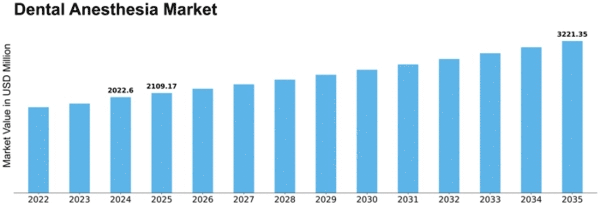

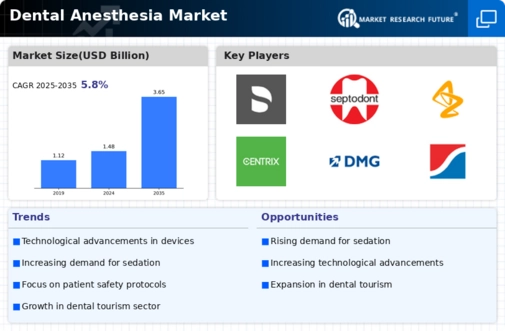
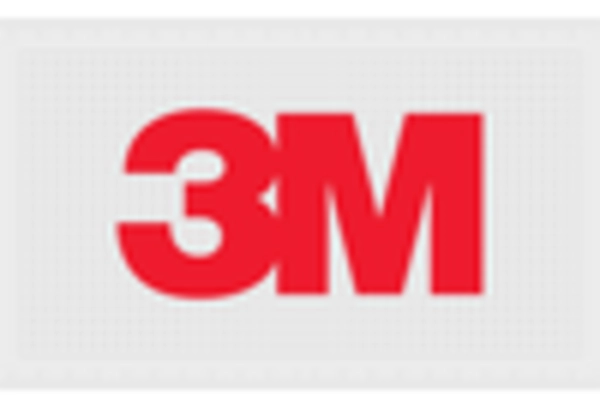
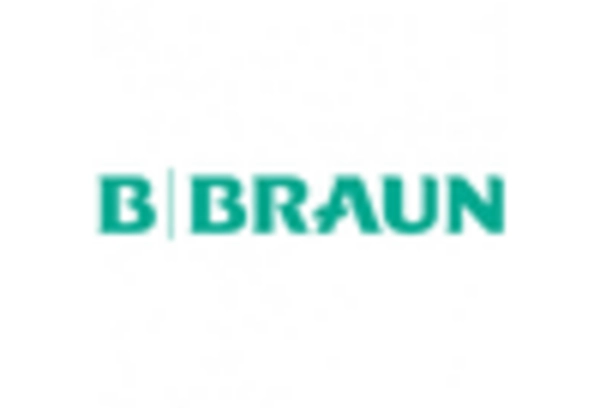
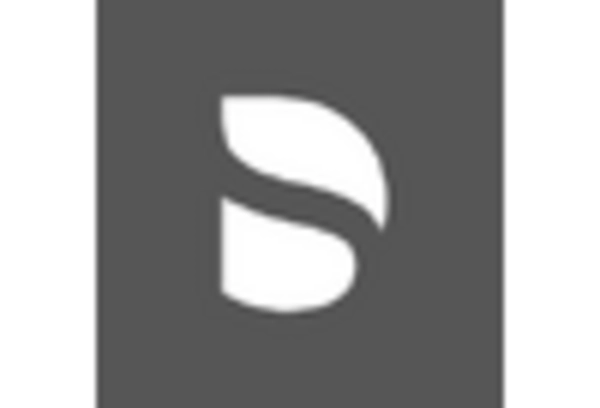
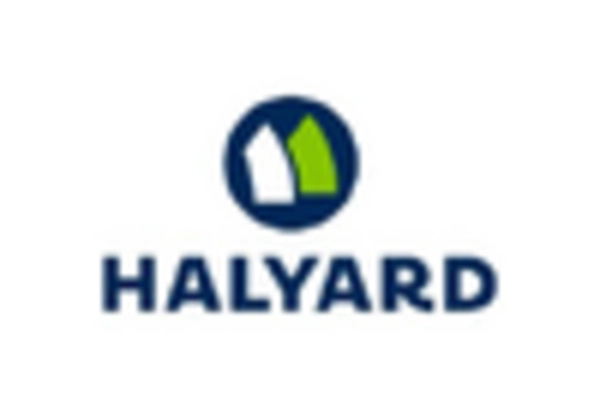
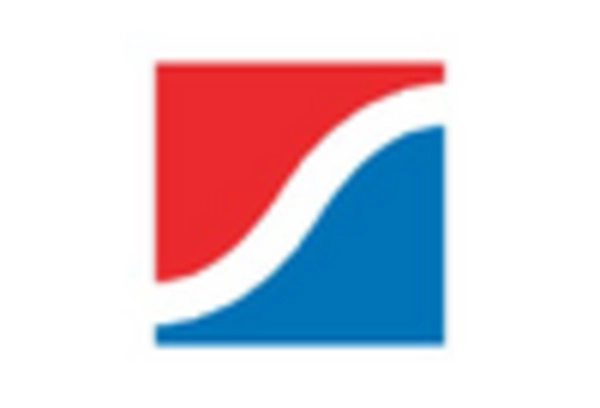










Leave a Comment